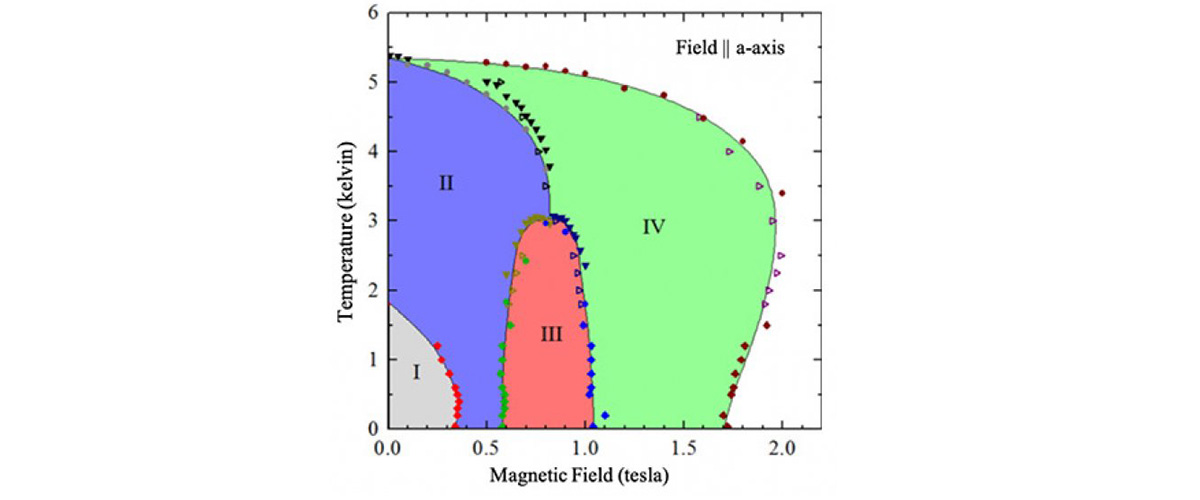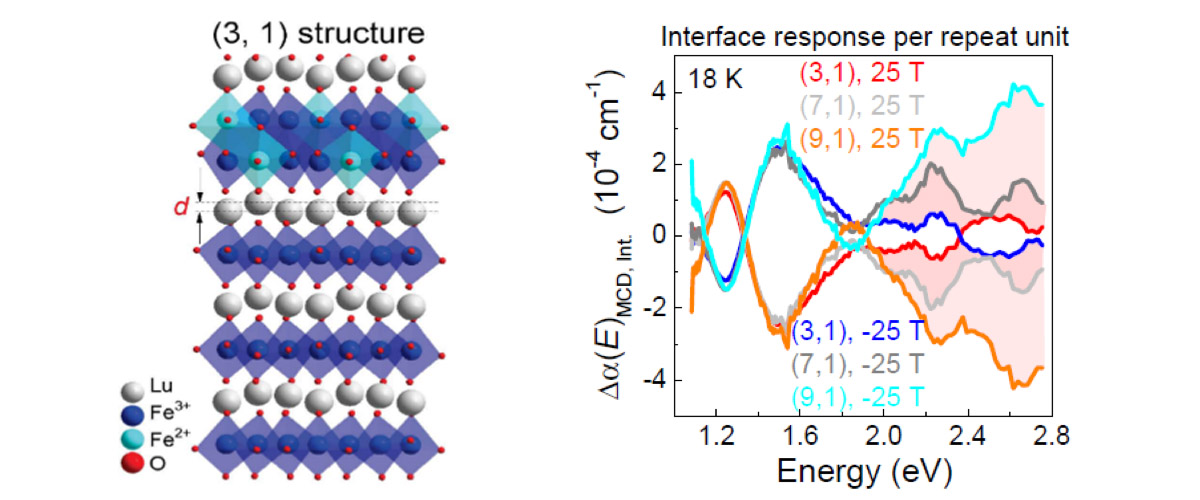What did scientists discover?
Compounds containing the rare-earth element cerium exhibit a wide variety of fascinating and only partially understood behaviors. This work characterizes the phase diagram of the novel compound Ce3TiSb5, which exhibits an unusual inverse melting of magnetic order: that is, on cooling at 1.8K (gold arrow) the material becomes magnetic (green phase) then loses that magnetic order upon further cooling, which is a very unusual phenomenon.
Why is this important?
The freezing of water into ice upon cooling is a familiar phenomenon. However, under certain unusual circumstances, a liquid can melt upon cooling. This somewhat counterintuitive phenomenon is known as inverse melting, and it is known to occur in a variety of different systems including polymers, proteins, and liquid crystals. It has been proposed that inverse melting can be observed in magnetic systems. This work identifies Ce3TiSb5 as a metallic magnet in which inverse melting does occur: an ordered arrangement of the magnetic moments can become disordered (i.e. "melt") upon cooling.
Who did the research?
The work involved a wonderfully diverse group of four early career scientists (two undergraduates and two graduate students, including one REU student) -
D.E. Jackson1, T. Stevenson1, B. Jones1, D. VanGennep1, J.S. Xia1,2, R.E. Baumbach2,3, J.J. Hamlin1,2
1University of Florida; 2National MagLab; 3Florida State University
Why did they need the MagLab?
This research required the unique combination of magnetic field, low temperature, and low-noise environment available in the High B/T Facility.
Funding
G.S. Boebinger (NSF DMR-1157490, NSF DMR-1644779); J.J. Hamlin (DMR-1453752); S. Hershfield (DMR-1156737, REU for T. Stevenson)
For more information, contact Mark Meisel.





